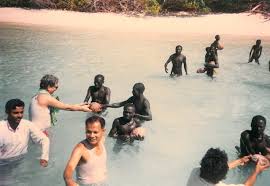Understanding the Sentinelese People: Isolation and Survival

Introduction to the Sentinelese People
The Sentinelese people inhabit North Sentinel Island, part of the Andaman and Nicobar Islands in India. They are known for their extreme isolation and resistance to outside contact, making them one of the last uncontacted peoples in the world. As more global attention is directed towards indigenous and marginalized communities, the existence of the Sentinelese raises significant questions regarding cultural preservation and the ethics of interaction with isolated groups.
Cultural Practices and Lifestyle
The Sentinelese maintain a hunter-gatherer lifestyle, with evidence suggesting that their community has thrived in this way for thousands of years. They are known for their skillful fishing, hunting, and gathering fruits and plants endemic to their island. The society is characterized by a small population, which is estimated to range between 50 to 400 individuals, though exact numbers are difficult to confirm due to their isolation. They construct simple huts and are known to use bows and arrows for hunting.
Government Regulations and Protection
The Government of India has designated North Sentinel Island as a tribal reserve, prohibiting outsiders from visiting the island. This policy is designed to protect the Sentinelese from the dangers posed by exposure to diseases and the disruptions that come with external influence. However, there have been several encounters between outsiders and the Sentinelese, including famous incidents involving illegal fishing and missionary activities, which showcased the tribe’s fierce resistance against outside contact.
Recent Events and Challenges
Recent years have seen tensions arise due to increased attempts at contact. An incident in November 2018 highlighted these challenges when an American missionary was killed after attempting to make contact with the tribe. This tragic event brought international media attention to the Sentinelese and raised discussions regarding the ethics of interacting with uncontacted groups. Despite Indian law protecting them, curiosity, and missionary zeal continue to pose risks to their way of life.
Conclusion: The Future of the Sentinelese People
The future of the Sentinelese people remains uncertain amid modern pressures and legislative protections. As discussions around indigenous rights continue to evolve, it is crucial for global society to respect their autonomy while understanding the implications of contact. The Sentinelese’s struggle to remain isolated raises significant ethical questions concerning cultural preservation, highlighting the need for ongoing vigilance in protecting their rights and their way of life.









